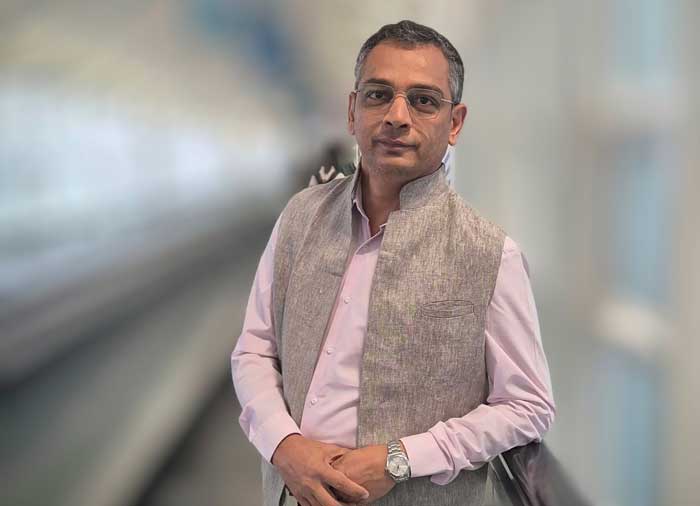
We Need Open Access to Global Raw Materials
Zoom Texturisers, established on July 13, 1990, specialises in a comprehensive range of yarn processing activities, including air texturising, normal texturising, twisting, cabling, and weaving. We cover the entire value chain from yarn to fabric, focusing on technical yarns like polyester, nylon, meta-aramid, para-aramid, and others used across various technical industries and applications. The client base for the company’s products is traditional as well as modern. The end users apart from all types of yarn processors are in diverse branches such as automobile, fabrics ropes and cables, conveyer belt, industrial rugs and carpet industry with potential dimensions in Agriculture technology. Paresh Thumar, Technical Director, Zoom Texturisers, in this interview with Divya Shetty, shares the company’s offering as well as the current state of the Indian technical textiles industry.
Which segment of technical textiles is currently seeing the most demand?
The Indian market is expanding significantly in geo textiles, followed by protective textiles, packing textiles, and coated fabrics. Additionally, there’s growing demand from the defence sector, particularly in supplying the Army, Navy, and aviation.
Can you provide a breakdown of the raw materials your company sources from other countries?
We source materials from around the globe, depending on availability. For example, a material might come from a plant in America, Japan, or China, so there’s no single defined source. The technical textile field is vast, ranging from 7 denier to 10,000 denier. Even within polyester, there are various options like high tenacity, super high tenacity, low elongation, normal elongation, low shrinkage, and super low shrinkage.
What types of fibres does your company use in manufacturing? Also, is the raw material supply in India sufficient?
We still face a shortage of raw materials, and some products are not yet manufactured in India. Our weaving facilities range from 36 inches to 3.6 meters, capable of producing plain, dobby, and jacquard fabrics. There’s no specific fibre currently in high demand; it varies with climate conditions. For example, cotton and rayon are preferred in summer, while nylon and other fibres are used in winter. The demand fluctuates based on these factors.
What sustainable practices is Zoom Texturisers implementing in its manufacturing process?
We recycle all our inputs, including packing materials, paper, tubes, patterns, and boxes. Additionally, we operate a solar plant that covers 40 per cent of our energy needs. We continuously work towards sustainability, aiming to minimise our reliance on natural resources.
What other challenges is the Indian technical textile industry currently facing?
In my opinion, we need open access to global raw materials, regardless of whether they are produced in India. This access is crucial for business leaders and entrepreneurs to drive development, innovation, and new product creation.
What challenges do you encounter when importing raw materials into India?
The process is time-consuming and commercially unfeasible due to excessive charges. For example, I recently reviewed an invoice and found that I paid nearly 65 rupees per kilo just to clear the material. This amount covered various handling agency fees, including inland charges, loading, and unloading costs. These substantial expenses and complexities pose significant hurdles for many SMEs. Consequently, many businesses are discouraged from engaging in such processes, as the financial and logistical burdens outweigh the benefits.
How does Zoom Texturisers handle the cost implications of producing high-performance technical textiles, and how do you remain competitive in pricing?
We focus on sourcing high-quality materials and managing production across a wide range, from as little as one kilo to as much as 10,000 kilos. This flexibility allows us to accommodate smaller batches or trial quantities, making it easier for companies to develop and test new products without facing substantial costs. For instance, a company can start with a small batch of one kilo for initial trials and, if successful, scale up to 100 kilos or more for further development.
Our facility is equipped with some of the best technology available, including advanced German machinery and cutting-edge Indian equipment. This combination of high-tech resources and flexibility helps us stay competitive while supporting our clients through their development processes.
How difficult is it to find skilled labour in India, particularly in the technical textiles sector?
We address the shortage of skilled labour by implementing semi-automation and using specialised machinery for different products, which helps us manage the challenges. However, it’s true that the industry as a whole faces skill gaps. Over the past 20 years, I’ve observed high turnover among labourers, with frequent changes and shifts in their profiles. Many workers prefer immediate cash payments over benefits like ESI or CF, which adds to the industry’s challenges.
What are Zoom Texturisers’ short-term and long-term plans?
We are committed to continuous innovation and development at Zoom Texturisers. In the short term, we are focusing on enhancing our operations by introducing new machinery and facilities. For example, we are adding a new coating line specifically for industrial yarn to capitalise on emerging opportunities and meet evolving market needs.
In the long term, our strategy includes expanding our production capacity in response to increasing demand. However, we face significant challenges in the global market. Our products struggle to compete internationally due to high domestic prices compared to neighbouring countries such as China, Vietnam, Bangladesh, and Cambodia. These high costs hinder our ability to export effectively.
Moreover, I would like to emphasise the need for improved access to raw materials. The current restrictions and high costs of obtaining these materials pose a major obstacle for the industry. Without easy access to raw materials, it becomes difficult for businesses to innovate and compete. Addressing this issue could help leverage our local resources and population to better serve domestic and international markets, reducing our dependency on imports and fostering industry growth.




